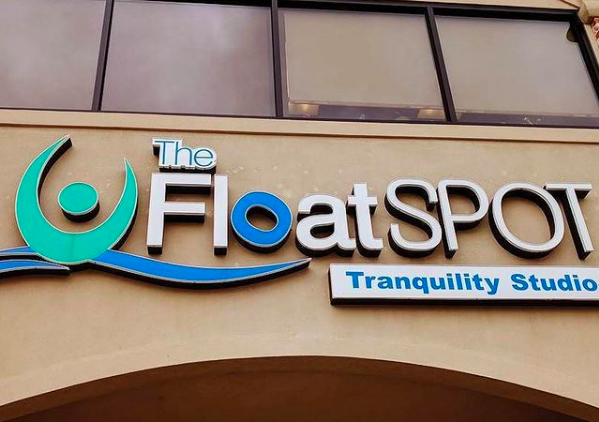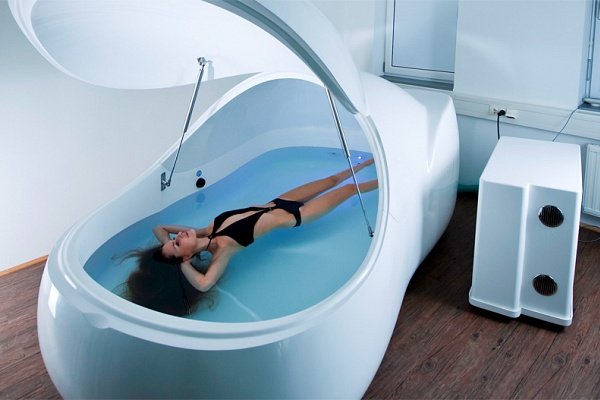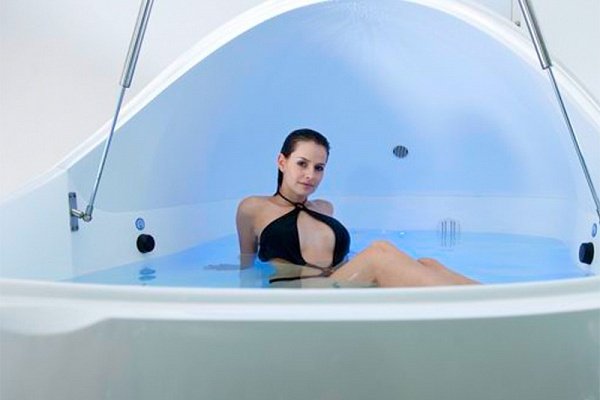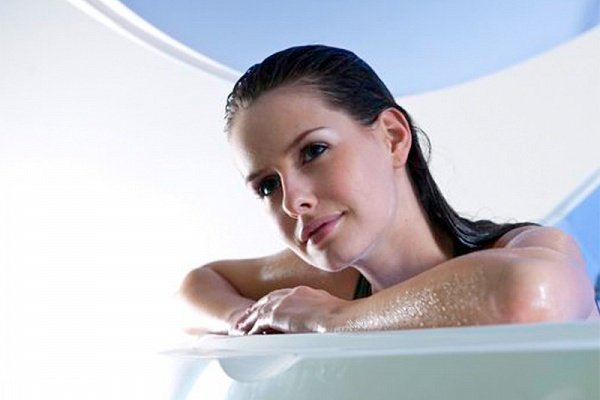15 April 2021, by i-sopod
We recently checked in with Ray Thoma, owner and founder of The FloatSpot, Frisco TX, to hear the eventful story of how he came to set up his floatation business.
Ray shared with us how he went from stumbling across floatation to embarking on a business venture, and the highs and lows of that start up journey.
We also got to hear a bit about Ray’s experience running a float centre; what he likes about it, what makes it fulfilling work to do, and how he provides customers with a good level of care and attention.
The Path To Floating
First, we heard about how Ray went from not knowing a thing about floatation, to selling his home and moving states to open a float centre… at a time when there were only 70 odd floatation spots in the entire US!
Sitting in a pub in Sydney, Ray was eavesdropping on two ‘rather large Aussie men’ who kept using the word ‘float’, which got him curious about their conversation. They turned out to be AIS athletes, and they explained to Ray that floatation was mandatory at the AIS: they were encouraged to float for accelerated muscle recovery, using visualisation techniques for improved performance.
At the time, Ray was working for a company who made athletic compression apparel to help and accelerate muscle recovery. Because of his work, Ray’s intrigue was piqued by the idea of floatation, and he decided to find out more about it.
‘I probably spent the next 9 months doing as much research as I possibly could about floatation – something I had no idea about, had never heard of […] The more I unrolled this web of how long floating had been around, the more intriguing it got […] I thought, God, why isn’t this more prominent in the US?’
Choosing The Right Float Tank Manufacturer and Taking the Plunge
As intrigue turned into interest, Ray’s brain was ticking about floatation as a business venture, as an effective means to help athletes in recovery. He found all the manufacturers he could and started emailing them, but was shocked at how many didn’t get back straight away, or couldn’t really answer his questions. He then stumbled on i-Sopod.
‘It was the sexiest float tank that was out there!’
‘There’s a reason why Floatworks had been open for so long and only had one location – because you want to be great at what you do. you don’t want to be just ok.’
After a series of phone calls and emails, we invited Ray to the UK to come and learn more about floatation and about i-Sopod. Ray spent three days at Floatworks, chatting to customers as they came in and out of their sessions. At this point he’d not even floated yet himself.
It was the people Ray met during his visit, and the conversations he had that helped him make his mind up about starting a floatation business.
Not Just for Athletes – The Myriad of Floatation Benefits
Chatting with the clients who were in and out of Floatworks, Ray was able to get a better understanding of floating, and what people were getting out of it. These conversations broadened his perspective; prior to this, Ray was aware of floatation only for athlete recovery.
A conversation with two barristers coming out of their float sessions had a big impact on Ray.
The lawyers told him that when preparing for a case they would have a hard time sleeping the night before, and would then be exhausted for the trial. By floating the day before, not only did they sleep well, but when they got home and listened to their recorded notes, it acted like a hardwiring process.
‘When they got up the next day to go to court they felt like they were cheating, because everything was at the top of their head – they could go from point A to point p.53, at the snap of a finger – and felt like they had an advantage in court. I thought, man, there’s not an attorney I’ve met in my life who’s capable of relaxing – they’re all highly strung. I thought, if [floating] could do that for an attorney […] then maybe this isn’t just for athletes maybe this is for the general population.’
On the last day of his stay, Ray had his very first floatation experience.
Tim, founder of i-Sopod and cofounder of Floatworks, said to Ray before he went into the tank, ‘think of a place where you go and you automatically relax, destress, and decompress.’ Ray thought of a favourite destination of his in Florida, and while he floated, discovered the power of visualisation.
‘At some point in my float, I felt incredible warmth, […] I felt the texture of the sand between my toes […]In my mind, I took that vacation again, I was physically and mentally there. And that’s what sold me.’
When Things Don’t Go According to Plan…
Here comes the twist in the tale, which just goes to show that things don’t always go smoothly…
With his family in tow, Ray moved states, put down the deposit on his tanks with i-Sopod, and was soon to start paying rent on his new business premises, when Tim called…
There had been an arson attack at the i-Sopod warehouse, and all Ray’s tanks had been destroyed, along with the original mould for the i-Sopod.
‘Everything was just gone […] I looked at him and thought, I don’t know what kind of humour Brits have, but there’s no way that that’s even remotely funny.’
Tim and the i-Sopod team then had to go through the lengthy and arduous process of dismantling a tank to reverse engineer a new mould, in order to remake Ray’s tanks.
‘It’s kind of like Murphy’s Law… You try to think you’re going to cover every what if… but the what if of a fire at the warehouse that was hosting your equipment, never even went through my mind.’
Ray spent the next 3-4 months selling people on his business based on elusive float tanks, in an empty premises, with with nothing to show except a few photos of what was coming.
‘I had to tell the best story I possibly could. And the one thing I learned was, you can’t lie to a customer. I think they appreciate more when you’re upfront, honest and open, because they can relate to it.’
The whole experience, although incredibly stressful at the time, gave Ray more faith in i-Sopod, thanks to the service he received; ‘if that person doesn’t feel like they have an investment in your success, then you’re not gonna get the right customer service.’
Customer Care: the key to a successful floatation business
When it comes to running a float centre, there are a few things Ray has learnt along the way. It’s clear when speaking to him that the customers are very much at the centre of everything he does, and that the priority for him is delivering not only the best floatation experience possible, but providing each customer with enough interaction to make sure they feel heard and valued.
‘Too many people put so much money into how their facility works and making sure they have the best of the best. When it comes down to it, people want to know that when they come in that the investment they’re making in themselves they’re going to get value from, [and that’s] if it’s clean and the staff is attentive and listening.’
Ray told us how it’s the contact customers have with the staff, before and after the float, which is so important, and sometimes the game-changer between a bad experience and a good one:
‘When people come out from their float and didn’t have a good experience […] you can always turn that negative experience around, just by listening to them and engaging with them, and assuring them that whatever they experienced is not weird.’
And, finally, what does Ray like the most about running his business?
‘This is by far one of the most rewarding things I’ve done in my life’ Ray said about running the FloatSpot. ‘When you get that excitement, that joy, that aha moment when people come out, it’s almost like a part of you floats multiple times a day every single day. that kind of fuels you – this is why we’re doing it’.
The Floatspot Tranquility Studio is in Frisco, Texas, and is run by owner Ray Thoma. Check them out on Instagram, or head to their website.






